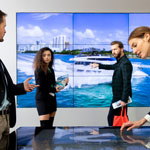
EXHIBITION
Bring your world outside
Trade shows, events, seminars, conventions, and art galleries become overwhelming experiences.
Nowadays it’s difficult to convey the idea that museums be drivers of innovation. In most people’s minds, museums remain dusty, boring places that are just about as far removed as possible from any kind of fun. This mentality is a serious handicap considering the enormous wealth of cultural heritage at our country’s disposal, which consist of almost five thousand museums, archaeological sites, and monuments. This enormous cultural heritage is all too often snubbed or underestimated. In fact, none of the top 10 museums visited around the world are in Italy.
And while much remains to be done, we already have the tools at our disposal: digital technology can transform museums into places of exchange, accessibility, and engagement unlike anything we’ve ever seen before.
Through the Digital Transformation, museums have become the central elements of an interactive, interconnected, multimedia system: a real physical and digital network in which a tour of the exhibits is just a part of an overall experience that begins beforehand and continues after the tour itself. After all, the wealth of artifacts or artworks contained therein can be seen as a set of contents, which in turn can be digitized, communicated, and transformed into an experience. Therefore, rather than a place intended to be passively explored, the museum becomes a place of interaction, where the user is the one who generates the information. In the words of Prisca Cupellini, head of communications at Rome’s MAXXI gallery of modern art, “The future of the museum will essentially be a conversation.”
The visitors’ “conversation” with the museum can begin on the web: despite a general delay, all Italian museums are now trying to strengthen their presence on both the Internet and the main social networks. The possibilities are endless, starting with the most important one: the possibility of purchasing admission tickets in advance and skipping any line-ups at the ticket booth. The tours can thus be carefully planned and customized based on the visitors’ needs, rendering them even more appealing.
Forget all about the uncomfortable rooms to be toured, the barely legible signs, and the poorly lit or otherwise barely visible artifacts. In the age of the Digital Transformation, a museum can become a “chamber of wonders”: a place of discovery, where the Digital Environment surrounds the visitor with a new and exciting experience.
Quick and interactive multimedia systems allow visitors to virtually tour buildings and monuments, watch audiovisuals, and listen to music or audio exhibits. And that’s not all: motion sensors capable of activating engaging projections can even be integrated within the displays in order to recreate realistic virtual environments, such as historical reconstructions or fantasy locations, where the visitor becomes the true protagonist of a captivating experience.
Thanks to proximity systems like Beacon and RFID, by simply approaching interactive stations with digital devices, visitors can activate them and receive content designed to render the tour even more interesting. It's like having a "virtual guide" that accompanies visitors along the pathway, expanding its contents, which can even be shared on social media. In virtual museums, multimedia systems replace traditional exhibits, creating true multi-sensory experiences.
And there’s still much that can be done to further stimulate visitors: just imagine the mechanics of gamification applied to a museum’s Digital Environment. For example, challenging users with quizzes that offer additional insights and allow them enjoy the content in a new and exciting way, or else interactive exhibits designed to even entertain the little ones.
The museum can even continue its dialog with the visitors at the end of the tour, thanks to digital technology: for example, by allowing the user to send certain contents to their smartphones or email addresses, or by sharing their experiences on social media. Thanks to the database of contacts generated using the interactive devices, as well as through optical profiling systems and the free social Wi-Fi, loyalty activities can be implemented, with customized itineraries, promotions on the books sold at the museum’s bookshop, the possibility of offering special preview tours, and so on.
It’s also important to remember that all of the visitor’s activities within the Digital Environment generate information: the areas that are visited most frequently, the exhibits most viewed, the most popular types of interaction, etc. This huge amount of data can be filtered thanks to sophisticated analysis software, which allows useful indicators to be obtained in order to improve the itinerary, the exhibits, and the proposed contents, thereby successfully promoting the museum’s growth.
The era of the same old museum, incapable of renewing itself and attracting new audiences, has come and gone, and the Digital Transformation has opened up extraordinary new possibilities for growth and improvement. By investing in a cultural heritage that will set us apart on the world stage, we can create a new museum concept: a center within a network of physical and digital services, one that promotes culture and development for the entire industry.

Trade shows, events, seminars, conventions, and art galleries become overwhelming experiences.
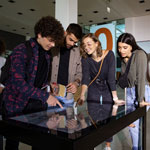
Solutions to attract visitors, entertain them and inform them through digital engagement.
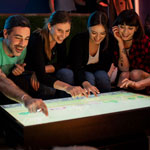
Take advantage of gaming dynamics to entertain, train and stimulate deeper engagement.
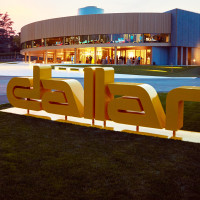
A research, meeting and training center where the digital world breathes life into memories, brings excellence to the network, and makes content even more spectacular.
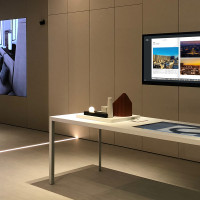
An interactive exhibition stand to translate the Customer requirements into reality.
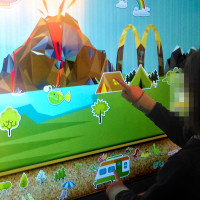
Creating a digital entertainment area for children, where they can tackle new challenges and socialize.